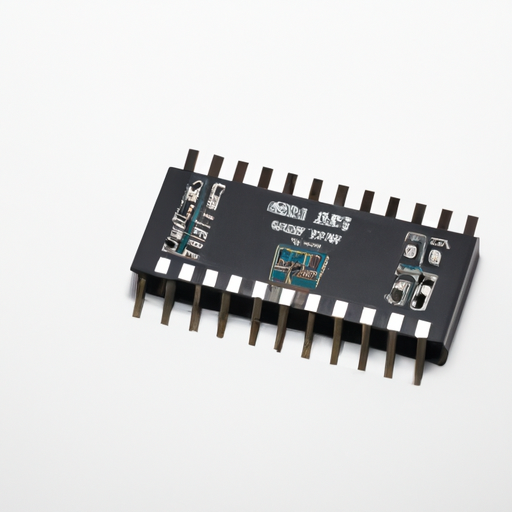Core Functional Technology of DIACs and SIDACs
1. DIAC (Diode for Alternating Current) - **Functionality**: A DIAC is a two-terminal semiconductor device that exhibits a non-linear current-voltage characteristic. It remains in a non-conducting state until the applied voltage exceeds a specific threshold known as the breakover voltage. Once this voltage is reached, the DIAC switches to a conducting state, allowing current to flow in both directions. - **Operation**: The DIAC operates symmetrically, meaning it can conduct in both positive and negative halves of an AC waveform. This characteristic makes it particularly useful for applications involving alternating current. - **Applications**: Common applications include: - **Light Dimmers**: Adjusting the brightness of incandescent lamps by controlling the phase angle of the AC waveform. - **Motor Speed Controls**: Regulating the speed of AC motors by controlling the power delivered to the motor. - **Triggering Circuits**: Used to trigger TRIACs in various AC control applications.
2. SIDAC (Silicon Diode for Alternating Current) - **Functionality**: A SIDAC is similar to a DIAC but is designed to handle higher power levels. It can also latch in a conducting state until the current falls below a certain level, making it suitable for applications requiring robust performance. - **Operation**: Like a DIAC, a SIDAC has a breakover voltage, but it is optimized for higher current and voltage applications. It can be used for both overvoltage protection and as a snubber device in circuits. - **Applications**: Common applications include: - **Surge Protection Devices**: Clamping voltage spikes to protect sensitive electronic components. - **Overvoltage Protection Circuits**: Preventing damage from voltage surges in various electronic devices. - **High-Speed Switching Applications**: Used in circuits requiring rapid response times.
Application Development Cases
1. Light Dimming Circuits - **Description**: DIACs are integral to light dimming circuits, allowing users to adjust the brightness of incandescent bulbs. By controlling the phase angle of the AC waveform, the DIAC enables smooth dimming. - **Effectiveness**: This application not only enhances user experience but also contributes to energy savings and prolongs the lifespan of light bulbs.
2. Motor Speed Control - **Description**: In applications such as fans and HVAC systems, DIACs are used in conjunction with TRIACs to control the speed of AC motors. The DIAC triggers the TRIAC at a specific phase angle, modulating the power supplied to the motor. - **Effectiveness**: This method allows for precise speed control, resulting in energy efficiency and improved performance in industrial and residential settings.
3. Overvoltage Protection - **Description**: SIDACs are employed in surge protection devices to clamp voltage spikes, safeguarding sensitive electronic components from damage. They react quickly to overvoltage conditions, switching to a conducting state to divert excess energy. - **Effectiveness**: This application is crucial for protecting electronic devices from transient voltage events, such as lightning strikes or power surges, ensuring reliability and longevity.
4. Triggering Circuits - **Description**: DIACs are frequently used in triggering circuits for TRIACs in AC applications. When the DIAC is triggered, it allows the TRIAC to conduct, effectively controlling the power delivered to the load. - **Effectiveness**: This application is prevalent in consumer electronics, providing reliable and efficient control over AC loads, enhancing the functionality of devices like light switches and appliances.
5. Snubber Circuits - **Description**: SIDACs can be integrated into snubber circuits to protect switching devices from voltage transients. They absorb excess energy, preventing damage to components during switching events. - **Effectiveness**: This application improves the reliability of power electronic systems, particularly in industrial and automotive applications, where voltage spikes can be detrimental.
Conclusion
DIACs and SIDACs are fundamental components in the realm of power electronics, offering effective solutions for controlling AC signals, protecting circuits, and enhancing the performance of various applications. Their ability to handle high voltages and currents makes them indispensable in both consumer and industrial settings. As technology advances, the potential for new applications and innovations involving DIACs and SIDACs will likely continue to grow, further showcasing their versatility and effectiveness in modern electronic systems.






